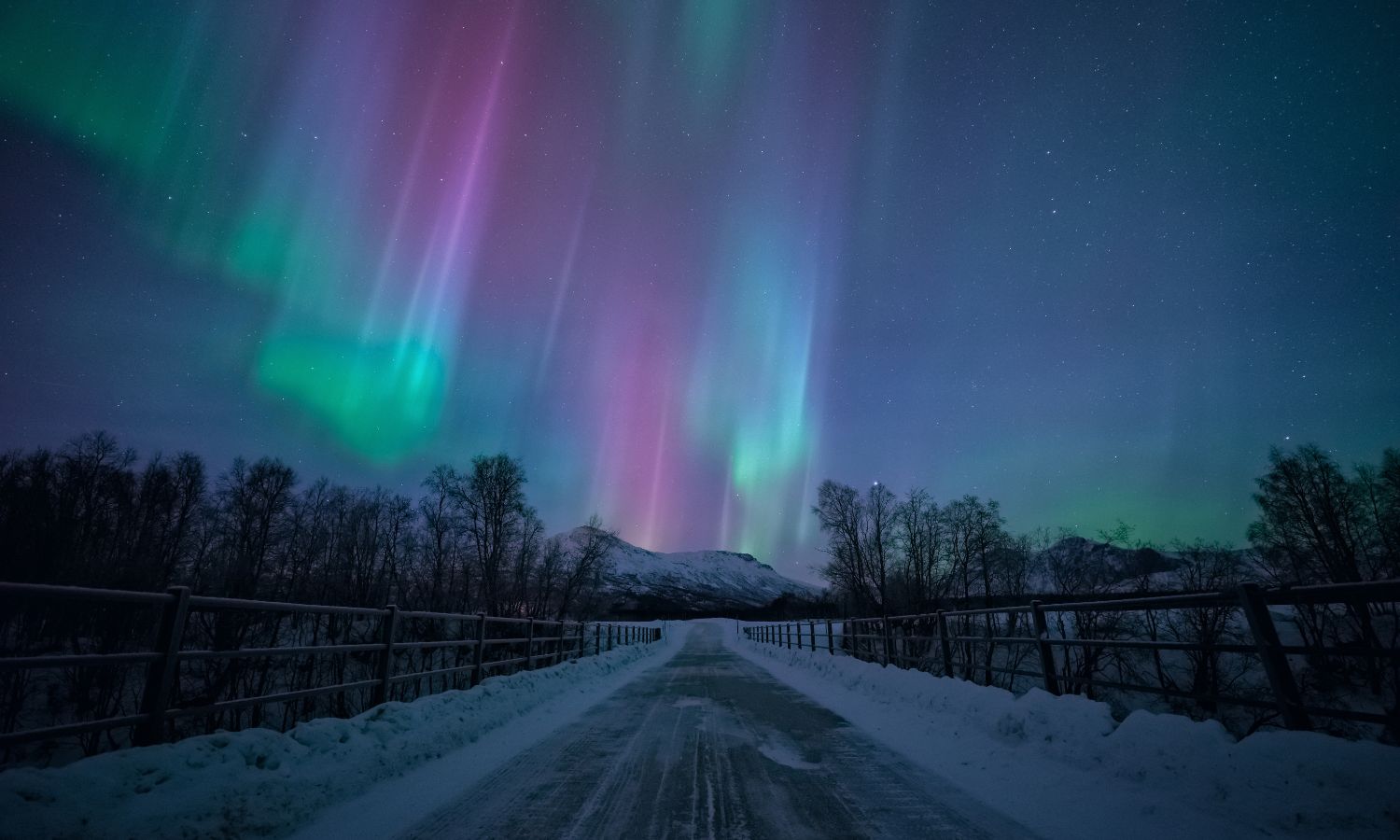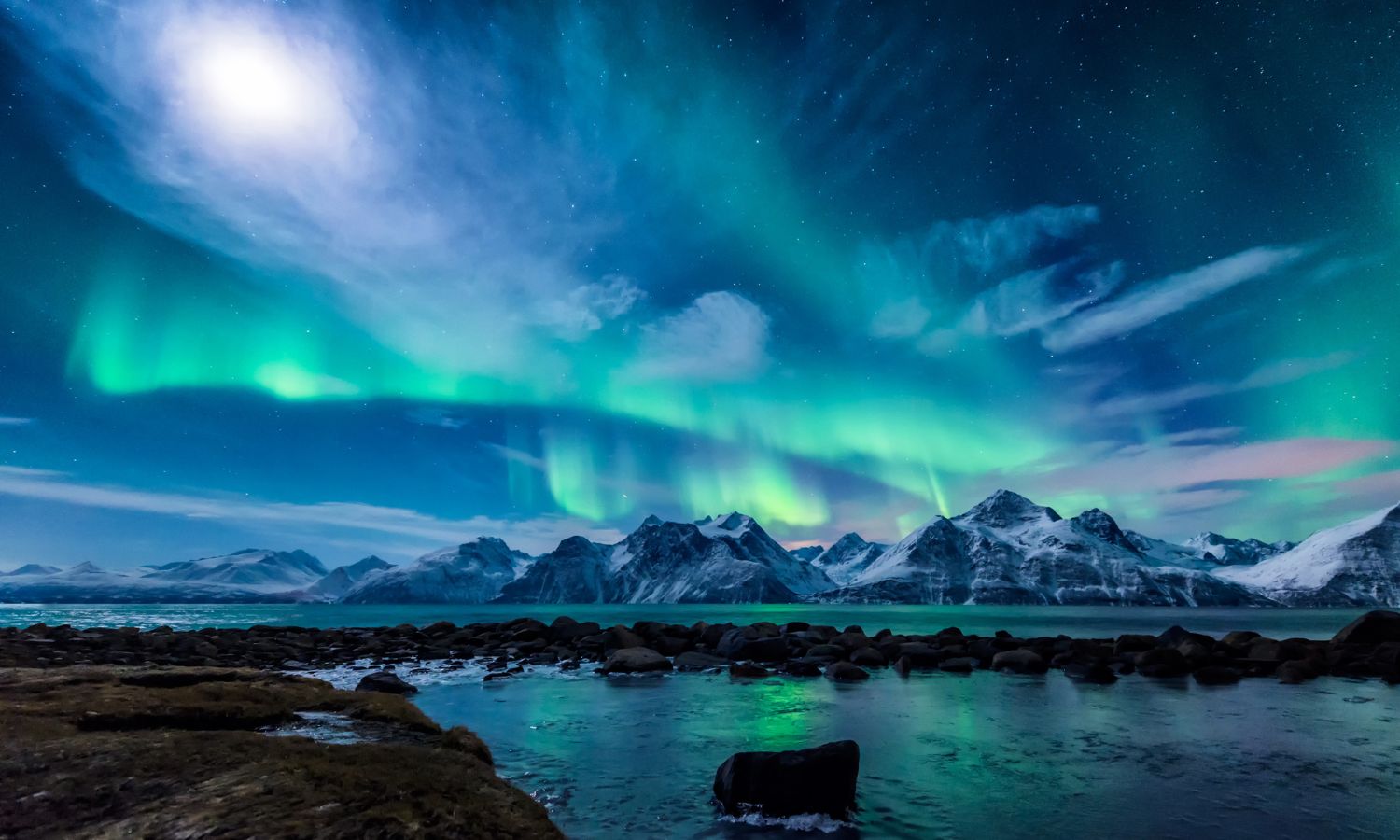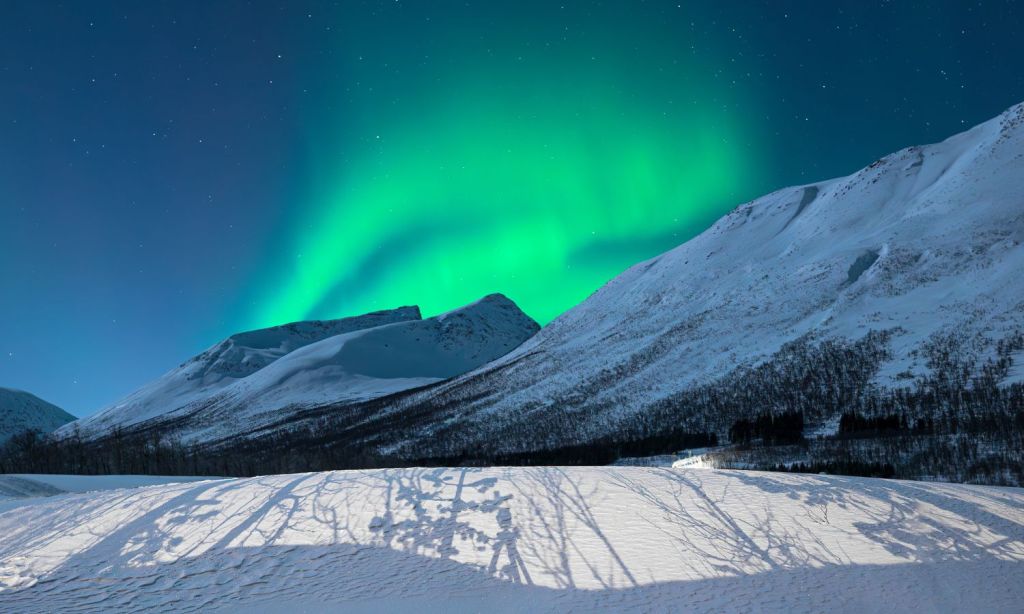The northern lights, also known as the aurora borealis, have captivated people for millennia but, in recent years, tourism surrounding them has boomed.
The hashtag #northernlights has nearly 84,000 posts on TikTok and over 2.5 million on Instagram, and, according to a recent survey commissioned by travel booking platform Expedia, more than half of Australians (57%) said they were keen to witness the northern lights once in their life.
If you too are among that group, ahead we share some of the most frequently asked questions — and answers — about experiencing the northern lights.
What Causes the Northern Lights?
Auroras appear near both the north and south pole. In the north, it’s called aurora borealis, while in the south, it’s known as aurora australis.
The lights we see in the night sky are caused by activity on the surface of the sun, explains Royal Museums Greenwich. Solar storms on our star’s surface give out huge clouds of electrically charged particles. These particles can travel millions of miles, and some may eventually collide with the Earth.
While most of these particles are deflected away, some become captured in the Earth’s magnetic field and accelerate down towards the north and south poles into the atmosphere.

“These particles then slam into atoms and molecules in the Earth’s atmosphere and essentially heat them up,” says Royal Observatory astronomer Tom Kerss. “We call this physical process ‘excitation’, but it’s very much like heating a gas and making it glow.”
The lights we see are atoms and molecules in our atmosphere colliding with particles from the sun. The wavy patterns are caused by the lines of force in the Earth’s magnetic field.
Where Can I See the Northern Lights?
The northern lights are most seen in the Polar Regions, within a 2,500km radius around the magnetic poles, states Norwegian cruise and ferry company Hurtigruten. The area is known as the Auroral Oval or Auroral Zone. According to Expedia data, some of the top trending destinations worldwide for seeing the northern lights are:
- Lapland, Finland
- Churchill, Canada
- Rovaniemi, Finland
- Narvik, Norway
- Kirkenes, Norway
- Kálfafell, Iceland
- Inari, Finland
- Abisko, Sweden
- Isle of Skye, Scotland
- Tromsø, Norway
When Can I See the Northern Lights?
While the northern lights are present in Norway for much of the year, they’re not always visible. It’s only during autumn and winter, from September to March, and occasionally in early spring, that the Arctic sky is dark enough for the aurora to be visible.

Though the northern lights occur year-round, for them to be visible, you need to have the right viewing conditions — and every night is different. The most important factor is darkness, though, there’s little to no chance you’ll see them during summer.
“Solar activity usually peaks around the fall and spring equinoxes, which occur in September and March, respectively, but you can still see the northern lights throughout the winter any time between those months,” writes Travel + Leisure.
The northern lights usually appear between 5pm and 2am, and only for a few minutes before gliding away and then returning, writes Hurtigruten.
“A good display may last no longer than 15-30 minutes at a time, although if you’re really lucky, it could extend to a couple of hours or longer,” it states.
Related: The Latest Travel Trend Takes Its Cue From ‘The Holiday’
Related: The Most Common Travel Scams to Watch Out For in 2024
Read more stories from The Latch and subscribe to our email newsletter.







